Robert Adam George III Silver Gilt Vase by Daniel Smith and Robert Sharp London
Sold
Follow Us
Robert Adam George III Silver Gilt Vase by Daniel Smith and Robert Sharp London
A fine and rare 18th century George III silver-gilt vase by Daniel Smith and Robert Sharp, London 1770. Based on a design by the Italian printmaker Stefano della Bella (1610-1664). The design was adapted by the architect Robert Adam (1728-1792).
The overall form of the vase and some of the ornaments, such as the drapery swags, figural masks and acanthus leaves on the body, are based on a design by the Italian printmaker Stefano della Bella (1610-1664). He produced about 1,400 prints during his lifetime which were very influential, particularly a series of designs for vases in Raccolta di Vasi Diversi, published between 1639 and 1648. The design was adapted by the architect Robert Adam (1728-1792), whose drawing, now in Sir John Soane’s Museum in London and was copied by the highly-fashionable silversmithing partnership Daniel Smith and Robert Sharp.
Daniel Smith and Robert Sharp’s partnership ran from 1763-1788. They supplied high-quality silver and silver gilt in the Neo-classical style to the most fashionable retailers and clients, including the Prince Regent. They were the principal manufacturers of a series of magnificent race cups, one of which was designed by the architect Robert Adam (1728-1792) and another is in the Royal collection
Robert Adam (1728-1792) was arguably the most famous eighteenth century British architect and designer, whose remarkable career in partnership with his brothers James and William has been thoroughly documented elsewhere and whose major commissions can still be seen at Harewood House, Kedleston Hall, Kenwood, Syon House and Osterley Park. Robert established his business in London after a Grand Tour study visit of Paris and Italy from 1754-1758 and in 1761 he was appointed architect of the King’s Works.
Robert is probably best known for his collaboration with Thomas Chippendale which resulted in some of the finest neo-classicist designs of the time, most notably at Harewood House. He also collaborated with John Linnell, Ince and Mayhew, Vile and Cobb, Daniel Smith and Robert Sharp, John Parker and Edward Wakelin.
Dimensions: 21.5cm., 8 ½in. high
Weight: 630gr., 20 ½oz.
Marked on the Base and cover
The vase was arguably the most fashionable interior design accessory of the late 18th century with the silver-gilt variant being at the top of the market, and a distinctive icon of the Neo-classical style. Inspired by the revival of interest in the antique world, the vase was often based, as here, on engraved design sources.
Further reading
A silver vase by John Parker and Edward Wakelin of the same scale, design and date is currently on display at the Victoria and Albert Museum, South Kensington (see the last image in photos.) Accession number: 564:1, 2-1874
A horse racing trophy in the form of a silver gilt two-handled cup and cover Presented to Sir William Foulis and Tatton Sykes as the owners of Trajan, winner of the Handicap Plate at Lincoln, 25 June 1813. Bequeathed to Queen Victoria by Christopher Sykes, 1898. The Royal Collection Trust: RCIN 50266
It should be noted that this is quite simply a masterpiece of museum grade.
Condition
Good. Wear consistent with age and use.
Dimensions
Height: 53.34 cm (21 in)
Diameter: 8.89 cm (3.5 in)
PREVIOUSLY SOLD
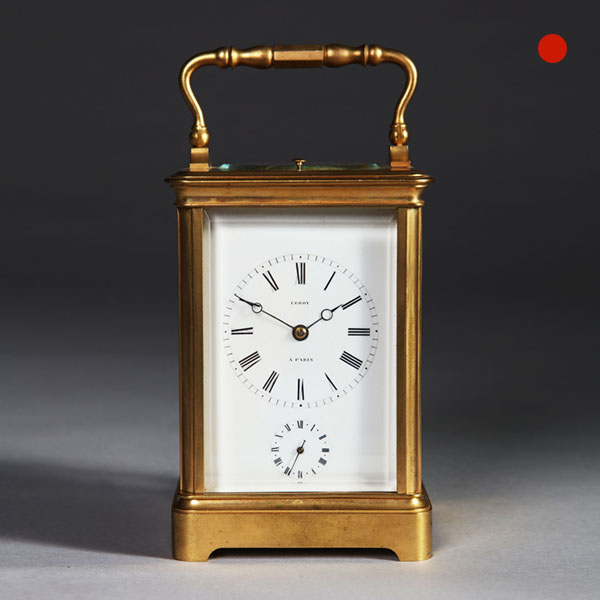
19th-Century Quarter-striking Carriage Clock by Leroy, Paris
The gilt-brass, so-called corniche case has bevelled glass panels on all sides so that the movement is entirely visible. It is surmounted by a shaped carrying handle. The white enamel dial has a Roman chapter ring, with Arabic five-minute and minute divisions.
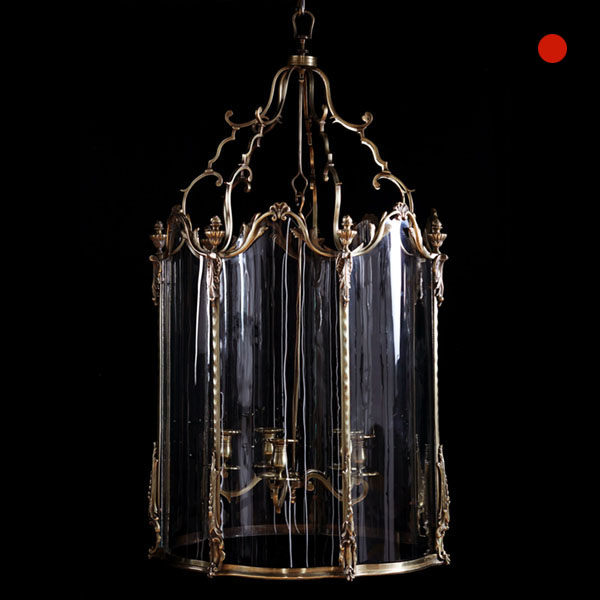
Louis XV Style French Lantern
A superb large French brass lantern of Louis XV style, 19th century. The five light chandelier within a cylindrical lantern cast with scrolling acanthus, shells and vase-shaped finials with serpentine glazed panels, fitted for electricity.
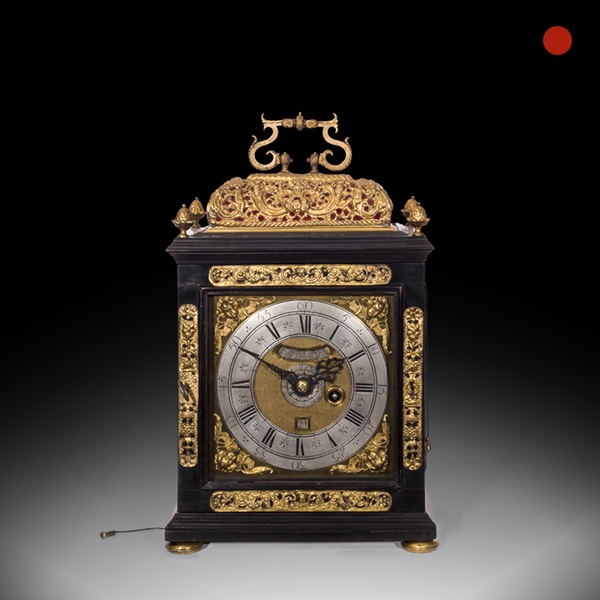
17th-Century Ebony Veneered Table Clock with Alarm and Pull Quarter Repeat
A magnificent sprung driven table clock by respected London maker George Etherington. The late 17th century, ebony- veneered table clock with alarm and pull quarter repeat on two bells, signed on the chapter ring Etherington London, and on the backplate Geo Etherington LONDON, c. 1695-1700.
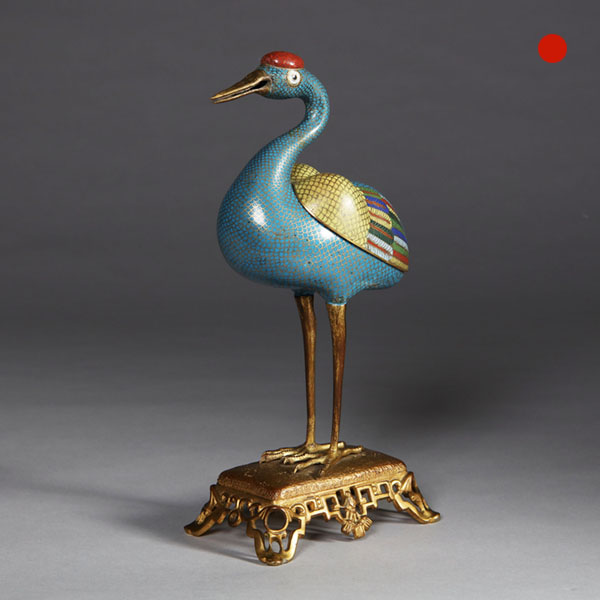
Chinese Cloisonne Enamel Censer Modelled as a Crane 18/19th Century Qing Dynasty
The characterful and charming 18/19th-century cloisonne enamel censer, is modelled as a crane with straight gilt-metal legs, realistically detailed feet and claws, standing on a detailed gilt base. The neck gracefully curved above the plump hollow body brightly enamelled in turquoise.
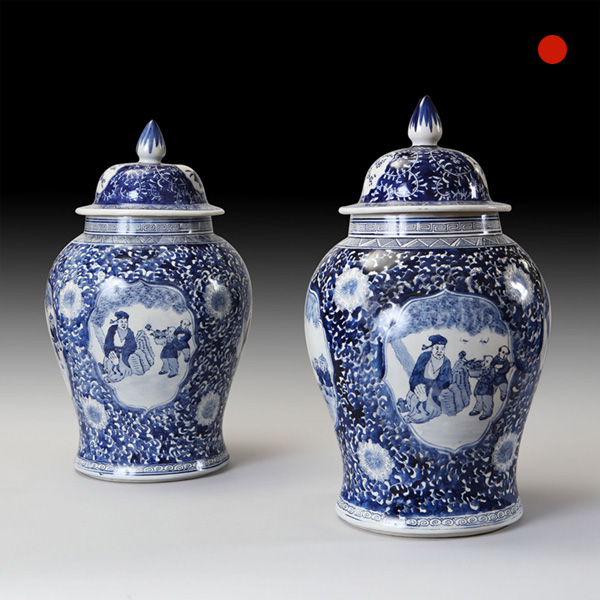
Large Pair of Blue and White Baluster Vases and Covers
Each jar is decorated with four reserves on a ground of scrolling flowers. The domed covers are surmounted by a finial. LATE QING DYNASTY (1644-1911).
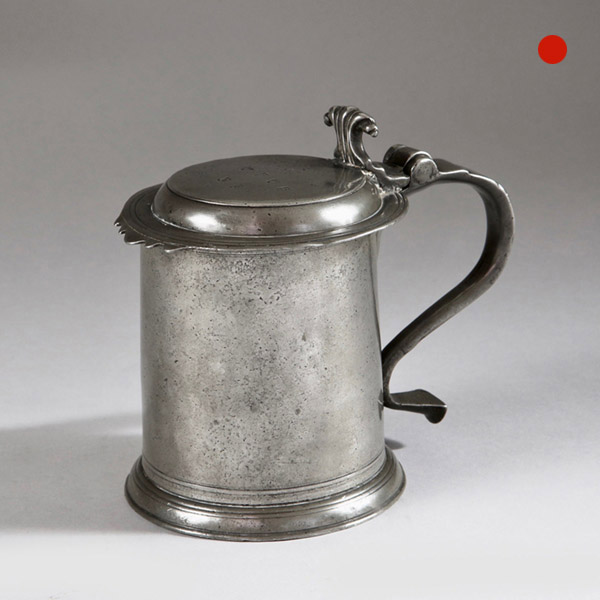
Charles II Pewter Flat Lid Tankard
The Oak Interior – An extremely rare Charles II pewter tankard dated 1666. The tankard bears a crested stamp dated 1666 to the inside of the base. The flat caddy and ringed lid are stamped to the top with four hallmarks of the period and the initials C B. The beautifully crafted handle terminates at a bifurcated rams horn hinged thumb piece and the vessel sits on a multiple ringed and flared base.

19th-Century Quarter-striking Carriage Clock by Leroy, Paris
The gilt-brass, so-called corniche case has bevelled glass panels on all sides so that the movement is entirely visible. It is surmounted by a shaped carrying handle. The white enamel dial has a Roman chapter ring, with Arabic five-minute and minute divisions.

Louis XV Style French Lantern
A superb large French brass lantern of Louis XV style, 19th century. The five light chandelier within a cylindrical lantern cast with scrolling acanthus, shells and vase-shaped finials with serpentine glazed panels, fitted for electricity.

17th-Century Ebony Veneered Table Clock with Alarm and Pull Quarter Repeat
A magnificent sprung driven table clock by respected London maker George Etherington. The late 17th century, ebony- veneered table clock with alarm and pull quarter repeat on two bells, signed on the chapter ring Etherington London, and on the backplate Geo Etherington LONDON, c. 1695-1700.

Chinese Cloisonne Enamel Censer Modelled as a Crane 18/19th Century Qing Dynasty
The characterful and charming 18/19th-century cloisonne enamel censer, is modelled as a crane with straight gilt-metal legs, realistically detailed feet and claws, standing on a detailed gilt base. The neck gracefully curved above the plump hollow body brightly enamelled in turquoise.

Large Pair of Blue and White Baluster Vases and Covers
Each jar is decorated with four reserves on a ground of scrolling flowers. The domed covers are surmounted by a finial. LATE QING DYNASTY (1644-1911).

Charles II Pewter Flat Lid Tankard
The Oak Interior – An extremely rare Charles II pewter tankard dated 1666. The tankard bears a crested stamp dated 1666 to the inside of the base. The flat caddy and ringed lid are stamped to the top with four hallmarks of the period and the initials C B. The beautifully crafted handle terminates at a bifurcated rams horn hinged thumb piece and the vessel sits on a multiple ringed and flared base.
YOU MAY ALSO LIKE
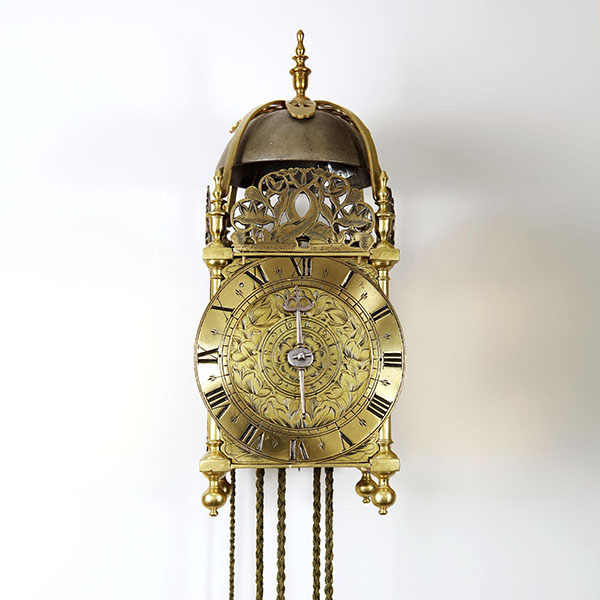
17th Century Lantern Alarm Clock by Johannes Quelch, Oxford
17th Century Lantern Alarm Clock by Johannes Quelch, Oxford £14,000Follow Us17th Century Lantern Alarm Clock by Johannes Quelch, Oxford An English 17th century lantern clock made of brass and iron, circa 1665-1670. The clock consists of going...
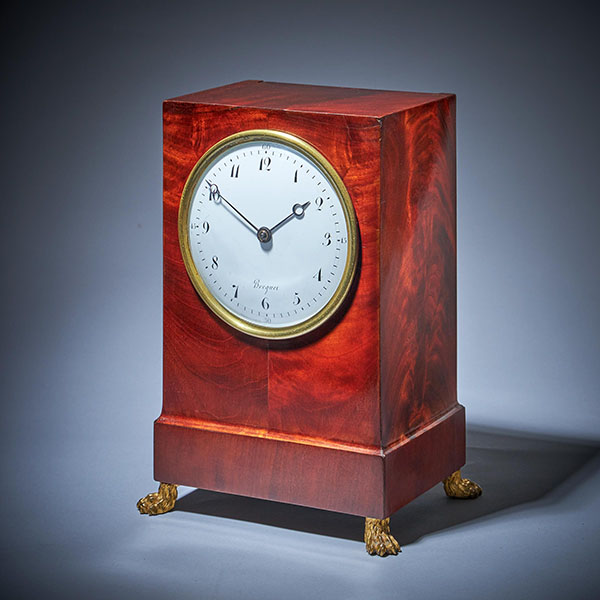
19th-Century Flame Mahogany Mantel Clock by BREGUET Raised by Lion Paw Feet
19th-Century Flame Mahogany Mantel Clock by BREGUET Raised by Lion Paw Feet £23,500Follow Us19th-Century Flame Mahogany Mantel Clock by BREGUET Raised by Lion Paw Feet EXTREMELY RARE MANTEL CLOCK WITH A FIGURED MAHOGANY-VENEERED CASE by A-L...
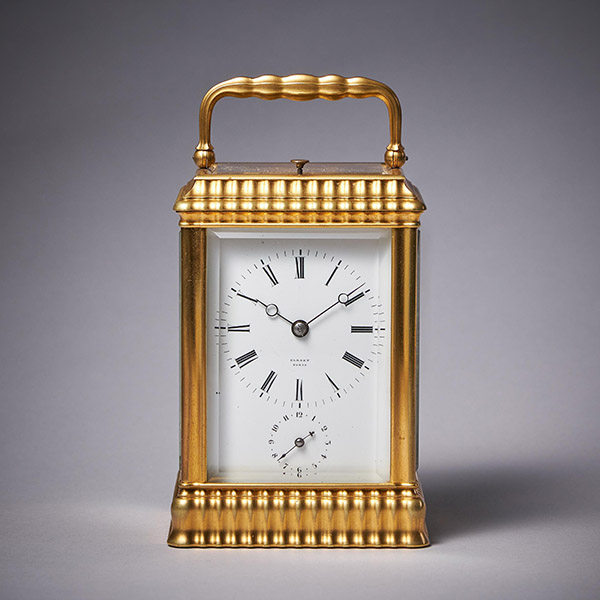
Unusual Ribbed Eight-Day Repeating Striking Gilt-Brass Gorge Case Carriage Clock
Unusual Ribbed Eight-Day Repeating Striking Gilt-Brass Gorge Case Carriage Clock £4,850Follow UsUnusual Ribbed Eight-Day Repeating Striking Gilt-Brass Gorge Case Carriage Clock CaseThe clock has a gilt-brass case which is a variation on the...
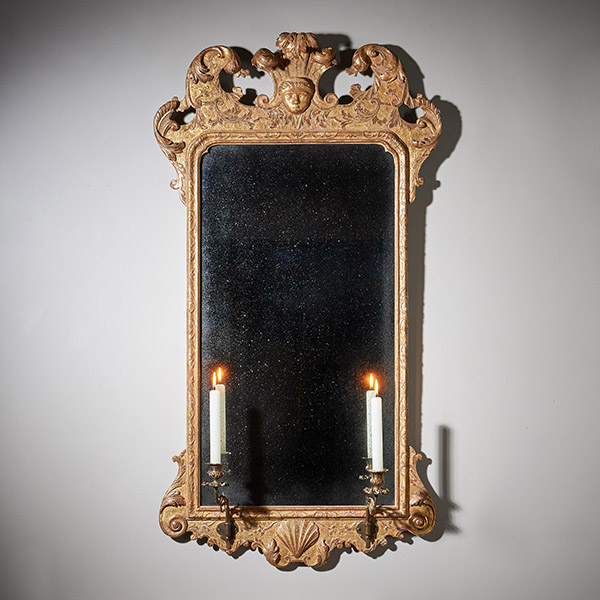
Fine 18th Century George I Gilt Gesso Pier or Console Mirror, Manner of Belchier
Fine 18th Century George I Gilt Gesso Pier or Console Mirror, Manner of Belchier £13,900Follow UsFine 18th Century George I Gilt Gesso Pier or Console Mirror, Manner of Belchier A fine and rare early 18th century George I Gilt Gesso pier or...
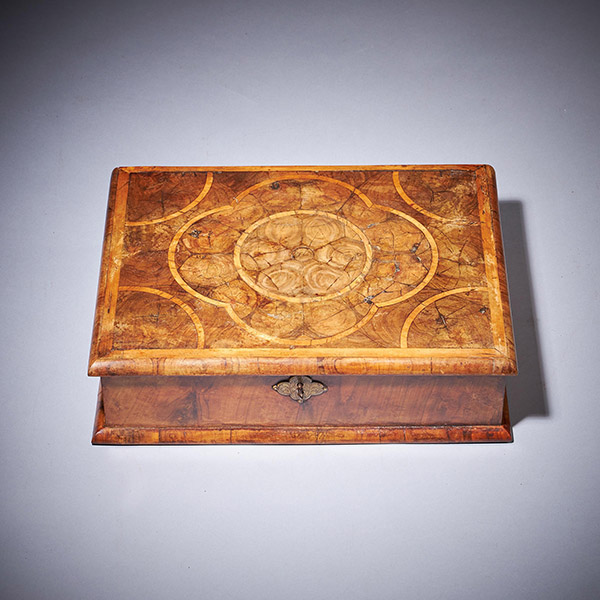
17th Century William and Mary Olive Oyster Lace Box, Circa 1680-1700
17th Century William and Mary Olive Oyster Lace Box, Circa 1680-1700 £3,900Follow Us17th Century William and Mary Olive Oyster Lace Box, Circa 1680-1700 A fine and rare 17th-century William and Mary period olive oyster lace box of perfect...
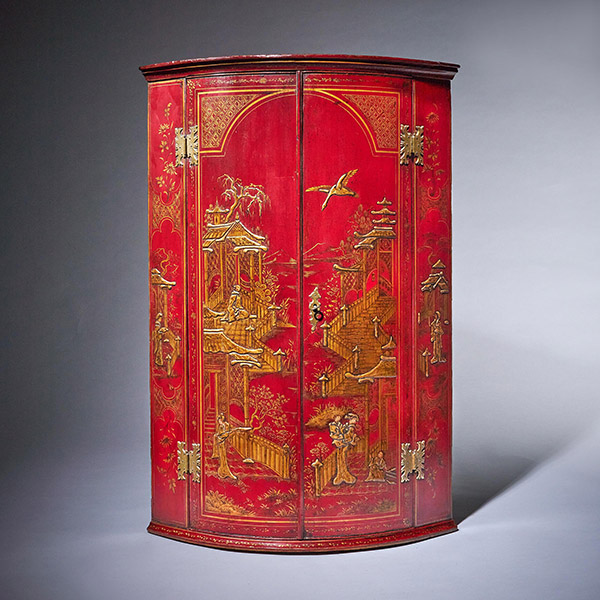
18th Century George II Scarlet-Red Japanned Corner Cupboard Att. Giles Grendey
18th Century George II Scarlet/Red Japanned Corner Cupboard, Att. Giles Grendey Follow Us18th Century George II Scarlet/Red Japanned Corner Cupboard, Att. Giles Grendey A fine and rare early 18th century George II scarlet japanned chinoiserie...

17th Century Lantern Alarm Clock by Johannes Quelch, Oxford
17th Century Lantern Alarm Clock by Johannes Quelch, Oxford £14,000Follow Us17th Century Lantern Alarm Clock by Johannes Quelch, Oxford An English 17th century lantern clock made of brass and iron, circa 1665-1670. The clock consists of going...

19th-Century Flame Mahogany Mantel Clock by BREGUET Raised by Lion Paw Feet
19th-Century Flame Mahogany Mantel Clock by BREGUET Raised by Lion Paw Feet £23,500Follow Us19th-Century Flame Mahogany Mantel Clock by BREGUET Raised by Lion Paw Feet EXTREMELY RARE MANTEL CLOCK WITH A FIGURED MAHOGANY-VENEERED CASE by A-L...

Unusual Ribbed Eight-Day Repeating Striking Gilt-Brass Gorge Case Carriage Clock
Unusual Ribbed Eight-Day Repeating Striking Gilt-Brass Gorge Case Carriage Clock £4,850Follow UsUnusual Ribbed Eight-Day Repeating Striking Gilt-Brass Gorge Case Carriage Clock CaseThe clock has a gilt-brass case which is a variation on the...

Fine 18th Century George I Gilt Gesso Pier or Console Mirror, Manner of Belchier
Fine 18th Century George I Gilt Gesso Pier or Console Mirror, Manner of Belchier £13,900Follow UsFine 18th Century George I Gilt Gesso Pier or Console Mirror, Manner of Belchier A fine and rare early 18th century George I Gilt Gesso pier or...

17th Century William and Mary Olive Oyster Lace Box, Circa 1680-1700
17th Century William and Mary Olive Oyster Lace Box, Circa 1680-1700 £3,900Follow Us17th Century William and Mary Olive Oyster Lace Box, Circa 1680-1700 A fine and rare 17th-century William and Mary period olive oyster lace box of perfect...

18th Century George II Scarlet-Red Japanned Corner Cupboard Att. Giles Grendey
18th Century George II Scarlet/Red Japanned Corner Cupboard, Att. Giles Grendey Follow Us18th Century George II Scarlet/Red Japanned Corner Cupboard, Att. Giles Grendey A fine and rare early 18th century George II scarlet japanned chinoiserie...








